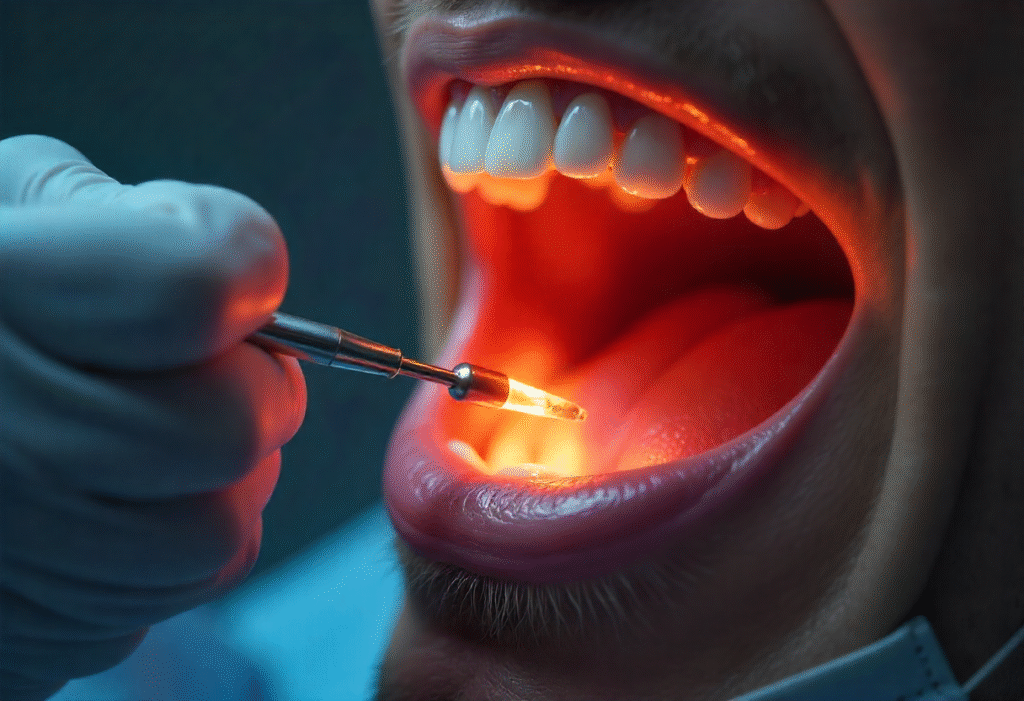The human body is full of intricate details, and some of the smallest structures can hold clues about our overall health. One such structure is the linea alba cheek, a faint white line that appears along the inside of the cheeks, typically where the upper and lower teeth meet. While usually benign, the presence of the linea alba can reflect subtle behaviors and habits, often revealing more than meets the eye.
Understanding Linea Alba Cheek
The term linea alba translates to “white line” in Latin. In the context of oral anatomy, it refers to a horizontal streak that appears on the buccal mucosa, commonly at the level of the occlusal plane. While it’s not a disease, the linea alba cheek can offer valuable insights into oral health and habits like bruxism, cheek biting, or orthodontic issues.
Anatomy of the Linea Alba Cheek
The buccal mucosa is the soft tissue lining the inner cheeks. The linea alba forms as a result of chronic friction or pressure, usually from the teeth. It typically extends bilaterally and is more prominent in individuals who subconsciously press their cheeks against their teeth.
Unlike pathological lesions, the linea alba is painless, well-defined, and does not grow or bleed. It often feels slightly raised and can sometimes be confused with more serious oral conditions.
What Causes Linea Alba in the Cheek?
There are several underlying causes of the linea alba cheek:
-
Chronic Friction: This is the most common cause, often resulting from the natural rubbing of the cheeks against the teeth.
-
Bruxism (Teeth Grinding): Habitual grinding can create pressure along the cheeks.
-
Cheek Biting: An unconscious or nervous habit that leads to repetitive trauma.
-
Orthodontic Appliances: Braces and retainers may contribute to frictional irritation.
-
Malocclusion: Misalignment of teeth can create uneven pressure and contribute to the development of the line.
Linea Alba Cheek vs Other Oral Lesions
It’s important not to confuse the linea alba cheek with other white oral lesions such as:
-
Leukoplakia: A potentially precancerous condition that appears as white patches.
-
Lichen Planus: An inflammatory condition affecting the mucous membranes.
-
Candidiasis (Oral Thrush): A fungal infection causing creamy white patches.
Unlike these conditions, the linea alba is consistent in shape, size, and location, and doesn’t evolve over time.
Clinical Significance of Linea Alba Cheek
While harmless, the linea alba can signal underlying oral habits that may need correction. Dentists and oral health professionals use its presence as a clinical clue. For instance, persistent cheek biting can damage soft tissues, leading to scarring, ulcers, or even infections.
In some cases, the linea alba can indicate emotional stress or anxiety, especially if associated with bruxism or habitual biting.
Diagnosis of Linea Alba Cheek
Diagnosing linea alba cheek is primarily a visual process. A dentist will examine the inner cheek lining and evaluate the pattern, texture, and extent of the white line. Questions about grinding, stress, and other oral habits often follow.
No biopsy or lab tests are usually needed unless the lesion looks suspicious or shows signs of abnormal growth or ulceration.
Treatment and Management of Linea Alba Cheek
Since it is a benign condition, treatment is usually unnecessary. However, managing the underlying causes can help reduce or eliminate it:
-
Mouthguards: Recommended for individuals with bruxism.
-
Behavioral Therapy: Helps patients stop cheek biting or reduce stress-related habits.
-
Orthodontic Adjustments: Correcting misaligned teeth can prevent friction.
-
Regular Dental Checkups: Early identification prevents complications.
Prevention Tips for Linea Alba Cheek
Although the linea alba is not dangerous, preventing its occurrence can improve overall oral health. Here are some practical tips:
-
Avoid chewing on pens, fingernails, or other non-food items.
-
Use a soft-bristled toothbrush to reduce oral irritation.
-
Address orthodontic problems early.
-
Manage stress through mindfulness, therapy, or physical activity.
-
Wear protective dental gear if prone to grinding.
Linea Alba Cheek in Children
Children can also develop the linea alba, especially if they wear braces or have the habit of biting their cheeks. Pediatric dentists often advise parents to monitor their children’s oral habits and stress levels.
In children, the line may be transient and disappear as the mouth matures and habits change.
Linea Alba Cheek in Adults
In adults, the linea alba may persist longer, especially in those with unmanaged habits or untreated dental alignment issues. Although it rarely signals anything serious, regular monitoring is advisable.
When to See a Dentist
Consult a dentist if:
-
The white line becomes painful or swollen.
-
It changes in size, texture, or color.
-
It spreads beyond the typical buccal area.
-
Other symptoms like bleeding, ulceration, or bad breath accompany it.
These signs might indicate more serious conditions that require medical evaluation.
Emotional and Psychological Aspects
The repetitive behaviors linked to the linea alba, such as grinding or biting, often stem from stress, anxiety, or tension. Addressing these emotional triggers through therapy, relaxation techniques, or support groups can have long-term benefits.
Misconceptions About Linea Alba Cheek
Some people confuse the linea alba with more severe conditions and fear it could lead to cancer. This is a misconception. It is a common and benign oral feature that requires minimal intervention.
However, vigilance is necessary if the lesion changes appearance or is accompanied by other symptoms.
Diet and Linea Alba Cheek
Spicy or acidic foods can aggravate the buccal mucosa but do not cause the linea alba directly. However, a healthy diet supports better tissue healing and reduces oral irritation.
Linea Alba Cheek and Smoking
Smokers may experience more pronounced linea alba due to increased mucosal dryness and friction. Although smoking isn’t a direct cause, it can exacerbate oral conditions and delay healing.
Dental Products and Their Role
Using mouth rinses, especially those with alcohol, can sometimes irritate the mucosa. Switching to alcohol-free options and maintaining good oral hygiene helps prevent aggravation.
How Long Does the Linea Alba Last?
The linea alba can be long-lasting but may fade or disappear if the causative habits are eliminated. Consistency in management and awareness is key.
Myths and Truths
-
Myth: Linea alba is cancerous.
Truth: It’s benign and not associated with oral cancer. -
Myth: It always needs treatment.
Truth: It often resolves without any medical intervention. -
Myth: Only adults get it.
Truth: Children and teens can develop it too.
Professional Insight on Linea Alba Cheek
Dental professionals view the linea alba cheek as a subtle yet meaningful marker. It represents how daily behaviors—whether conscious or not—leave visible imprints. Regular dental visits and habit assessments ensure that what begins as a minor mark doesn’t lead to greater issues down the road.
Maintaining Healthy Oral Tissues
A holistic approach is the best remedy—combining oral hygiene, behavioral awareness, stress control, and dental care. With that, the linea alba remains just a benign reminder rather than a red flag.
Linea Alba Cheek
The linea alba cheek may seem like an unimportant feature at first glance, but it’s a mirror reflecting your oral behaviors, habits, and even mental state. While it doesn’t usually require medical treatment, understanding and addressing its cause can improve oral health and overall well-being.
Also read: The Art and Appeal of Custom Screen-Printed Shirts
FAQs
What does a linea alba in the cheek indicate?
It usually indicates pressure or friction from the teeth due to habits like grinding or cheek biting.
Is linea alba cheek a sign of cancer?
No, it’s a benign condition and not related to oral cancer.
Can the linea alba disappear on its own?
Yes, it can fade if the causative habits are managed or eliminated.
Is linea alba cheek common in children?
Yes, especially if they wear braces or have oral habits like cheek biting.
How can I treat the linea alba cheek?
Treatment is usually unnecessary, but managing habits with mouthguards or therapy can help.
When should I worry about the linea alba?
If it changes in appearance, becomes painful, or is accompanied by other symptoms.
Conclusion
The linea alba cheek might be a subtle feature in your mouth, but it offers a window into your lifestyle and health habits. Though it rarely demands clinical attention, recognizing and understanding it can lead to improved dental care and behavioral awareness. Always consult a dental professional if in doubt and keep those cheeks happy and healthy.


